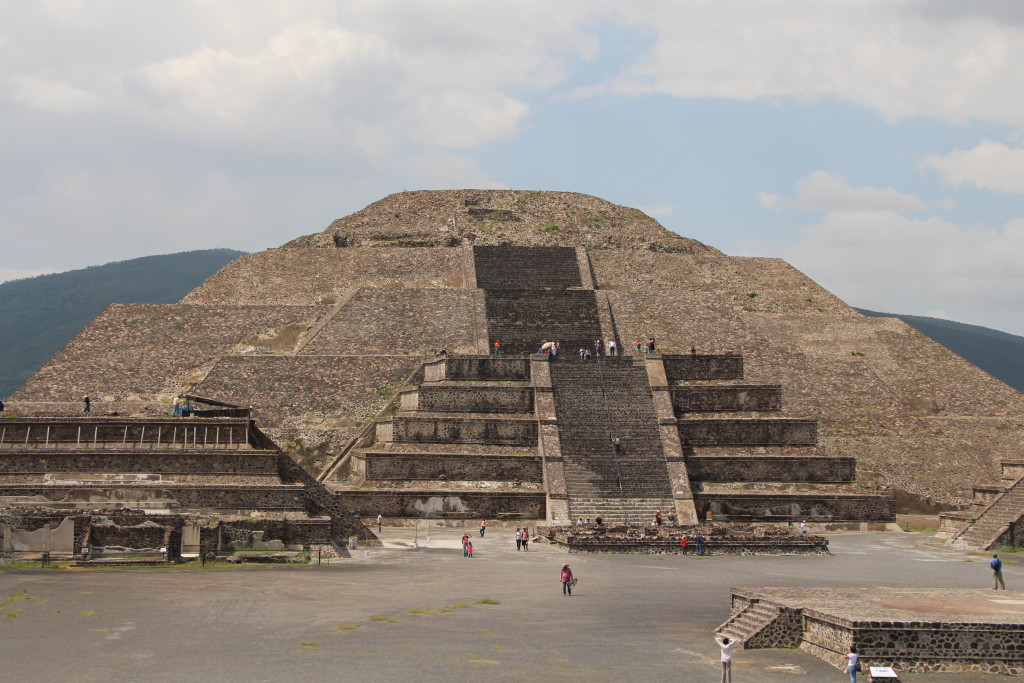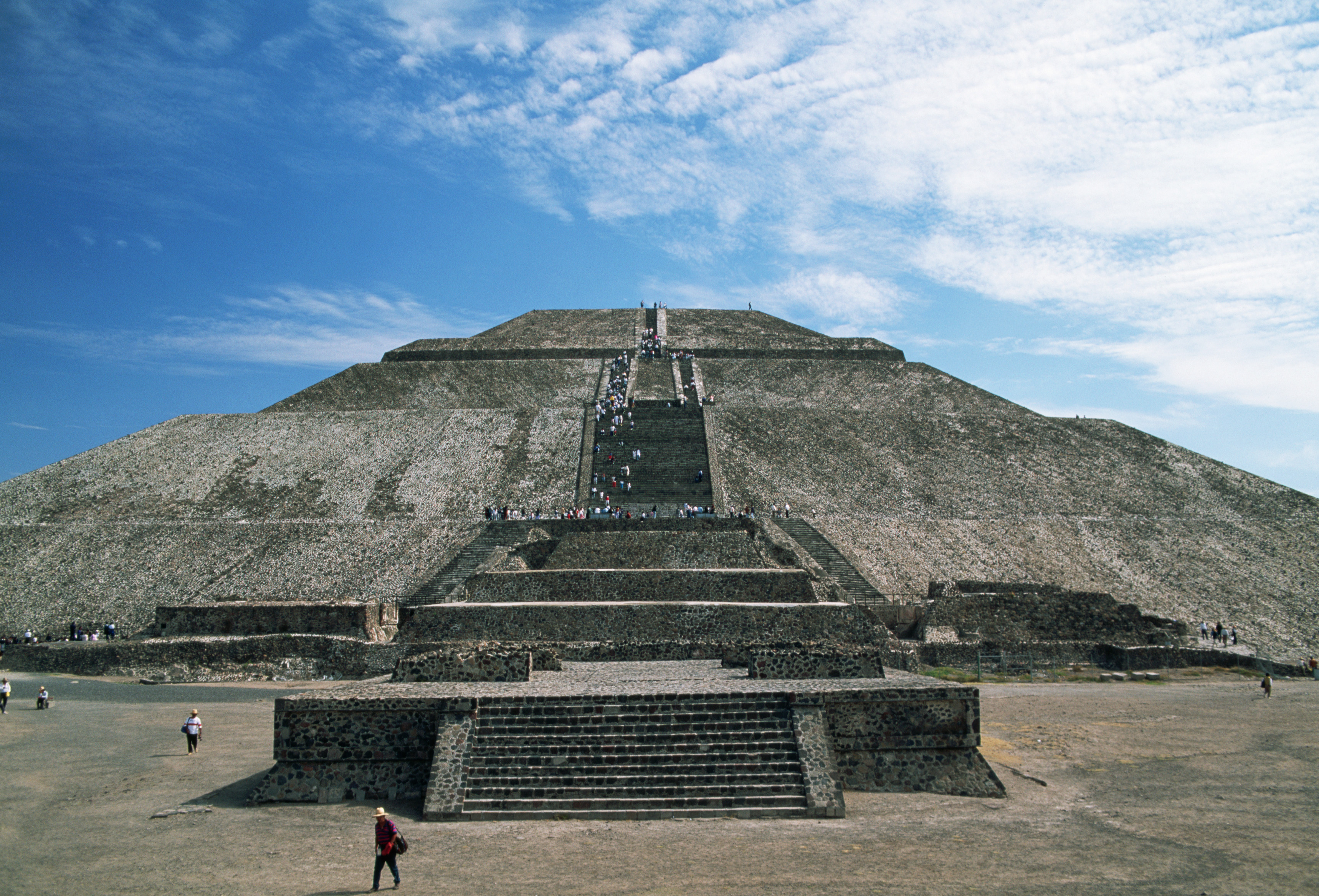The Pyramid of Sun is the largest building in Teotihuacan and Mesoamerica. The name derives from Aztecs, who visited the Teotihuacan during abandoned times. However, the name given to Pyramid by the Teotihuacanos is not confirmed.
The Pyramid of Sun is found along the Avenue of the Dead, in between the Pyramid of the Moon and the Ciudadela, and in the shadow of the massive mountain Cerro Gordo. The pyramid rises 216 feet above ground level, and it measures about 720 by 760 feet at its base. It was constructed of about 1,000,000 cubic yards of material.
The two-phase construction brought the size making it the third largest Pyramid in the world, just over half and height of the Great Pyramid of Giza. However, the second phase of construction could not survive in modern times. The Pyramid lime plaster was imported from nearby areas, with dazzlingly colored murals. As time passes, the Pyramid paint and plaster have no longer visible. The temple on the top of the pyramid was demolished deliberately and natural forces prevented the identification of the Pyramid.
The structure orientation had some anthropological significance, August 12, and April 29 is the divinatory Calendar year for the Teotihuacanos. Hence, August 12, is most important actually marking the date of the beginning of the present era and the initial day of the Maya long count calendar. The Pyramid was built on a man-made tunnel, and it is believed that the place could have been used as a royal tomb. There’re sacrificial objects found inside the Pyramid and the same objects have been discovered at the nearby Pyramid of the Moon.
A unique historical artifact discovered near the foot of the pyramid is now in the British Museum’s collection. Moreover, the burial sites of children have been found in excavations at the corners of the pyramid and thought these burials were part of a sacrificial ritual dedicating the building of the pyramid. The city and civilization decline after 450 CE are not confirmed.
Although archaeologists believe, that climate change and severe droughts led to internal unrest and may have caused the destruction of the city. Nowadays, Teotihuacan is a widespread tourist destination replete with museums and ongoing archaeological investigations.










